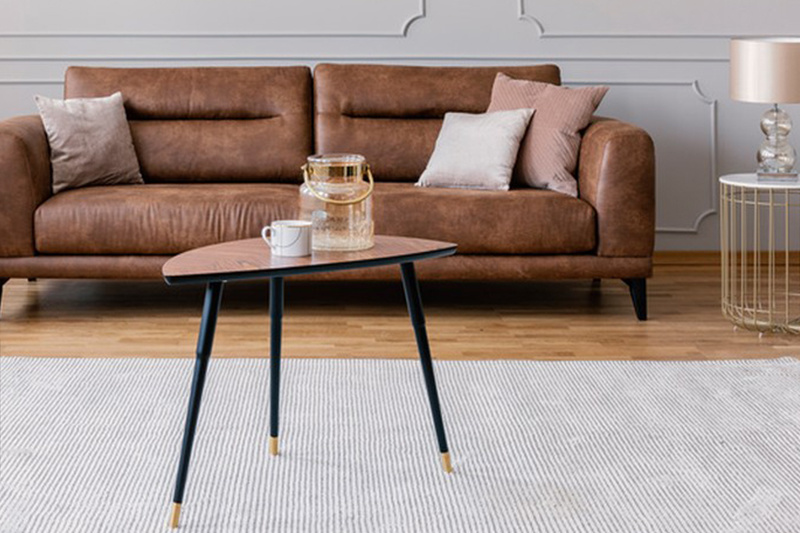Intertwining tradition and modernity: the road to innovation and development in the wooden furniture industry
Date:
2024-12-13
Source:
In today's home décor market, wooden furniture occupies an important position with its unique charm and deep cultural heritage. From the ancient mortise and tenon craft to the modern simple design, wooden furniture has undergone thousands of years of evolution, and is still a symbol of high quality of life in the minds of consumers. With the progress of science and technology and the transformation of consumer attitudes, the wooden furniture industry is facing opportunities and challenges.
First, the historical heritage: the cultural lineage of wooden furniture
The history of wooden furniture can be traced back to ancient times, as early as the Neolithic era, people began to use simple wooden tools and furniture. Over time, wooden furniture has developed its own unique style in different cultures and regions. For example, Chinese furniture of the Ming and Qing dynasties is famous for its exquisite craftsmanship, beautiful modeling and rich cultural connotations, and has become a treasure in the history of furniture in the world. These furniture not only focuses on practicality, but also emphasizes on art and culture, reflecting the aesthetic interest and philosophical thinking of ancient Chinese literati.
In Europe, the Gothic furniture of the Middle Ages, the Baroque and Rococo furniture of the Renaissance, and the neo-classical furniture of the 19th century represent the artistic styles and cultural characteristics of different historical periods. These traditional wooden furniture styles have had a profound impact on modern furniture design, many modern designers still draw inspiration from history, traditional elements and modern technology to create a sense of the times without losing the cultural heritage of wooden furniture works.
Second, process innovation: technology empowered wooden furniture manufacturing
Driven by modern industrial technology, the manufacturing process of wooden furniture has undergone great changes. The traditional manual production methods are gradually replaced by mechanized and automated production, greatly improving production efficiency and product quality stability. For example, CNC machining technology can cut and carve wood to achieve complex modeling design; laser cutting technology is able to carry out fine pattern carving and texture processing on the surface of wood, adding unique artistic effect to the furniture.
In addition, the application of new materials and new technologies also provides more possibilities for the innovation of wooden furniture. For example, the emergence of new man-made panels such as solid wood multi-layer board, fiberboard, particle board, etc. not only expands the scope of utilization of wood resources, but also improves the performance and stability of furniture. At the same time, the innovation of the painting process makes the surface treatment of wooden furniture more environmentally friendly, durable and beautiful, water-based paint, UV paint and other new paints gradually replaced the traditional oil-based paint, reducing the emission of harmful gases, in line with the modern consumer demand for green home.
Third, the design trend: integration of multiple styles to meet individual needs
With the changing aesthetic concepts of consumers, wooden furniture design style is increasingly diversified. Modern minimalist style is still the mainstream, characterized by clean lines, pure colors and a sense of spaciousness, emphasizing the harmony and unity of furniture and spatial environment. Scandinavian style focuses on the use of natural materials and humanized design, with its fresh, comfortable style loved by young consumers.
In addition to modern style, retro style and mix and match style is also gradually emerging in the market. Retro style wooden furniture through the reinterpretation of the traditional classic style, creating a strong historical atmosphere and cultural flavor; and mix and match style will be different materials, different styles of elements skillfully blended together to create a unique and personalized home space. In addition, the rise of custom furniture also provides consumers with more personalized options, consumers can according to their own preferences and the actual situation of the home space, customized exclusive wooden furniture to meet the needs of personalization.
Fourth, the current market situation: demand growth and increased competition coexist
In recent years, with the recovery of the global economy and the steady development of the real estate market, the market demand for wooden furniture has shown steady growth. Especially in emerging market countries, such as China, India, Brazil, etc., with the expanding middle-class groups and accelerated consumption upgrade, the demand for high-quality wooden furniture is increasingly strong. At the same time, the rise of e-commerce also provides a more convenient channel for the sale of wooden furniture, many furniture companies have layout online market, through the e-commerce platform to expand the scope of sales and improve brand awareness.
However, the growth of market demand has also attracted more and more enterprises to enter the wooden furniture industry, resulting in increasingly fierce market competition. In the domestic market, in addition to the traditional furniture manufacturing enterprises, some cross-border enterprises have also been involved in the field of wooden furniture, such as home building materials enterprises, real estate enterprises, etc. These enterprises, with their strong financial strength and brand influence, have risen rapidly in the market, which has brought great pressure to the traditional furniture enterprises. In addition, international brands are also increasing their efforts to develop the Chinese market, with its advanced design concepts of product quality and perfect after-sales service system, and domestic brands to start fierce competition.
Fifth, the challenge of environmental protection: sustainable development has become the focus of the industry
In the context of increasing global environmental awareness, the wooden furniture industry is facing serious environmental challenges. Over-exploitation of timber resources and illegal logging has been a concern, in order to protect forest resources and ecological environment, many countries and regions have introduced strict timber harvesting and trade policies to limit the supply of wood. At the same time, consumers are increasingly concerned about environmentally friendly furniture, and they are more inclined to choose furniture products that use environmentally friendly materials and production processes.
In order to cope with the environmental challenges, the wooden furniture industry is actively exploring the road to sustainable development. On the one hand, it strengthens the management and protection of timber resources, promotes the concept of sustainable forest management, and encourages enterprises to use legally harvested timber and environmentally friendly certified man-made panels; on the other hand, it increases investment in research and development of environmentally friendly technologies and processes, improves the utilization rate of timber, reduces waste emissions, and realizes the greening and recycling of the furniture production process. In addition, some companies also carry out the recycling of used furniture business to extend the life cycle of furniture products and reduce the impact on the environment.
Sixth, the industry outlook: towards an intelligent and green future
Looking ahead, the wooden furniture industry will continue to develop in the direction of intelligence and greening. In terms of intelligence, with the continuous development of the Internet of Things, artificial intelligence, big data and other technologies, the smart home market will usher in explosive growth. Wooden furniture, as an important part of home life, will also be integrated into the intelligent elements to achieve the interconnection of furniture and home equipment, providing consumers with a more convenient, comfortable and personalized home experience. For example, the smart closet can automatically adjust the internal structure according to the number and style of the user's clothes, and the smart coffee table can realize wireless charging, intelligent lifting and other functions.
In terms of greening, sustainable development will become the core theme of the wooden furniture industry. Enterprises will pay more attention to the research and development and application of environmentally friendly materials, and promote energy saving, emission reduction and resource recycling in the furniture production process. At the same time, consumer awareness and acceptance of environmentally friendly furniture will be further improved, green consumption will become the mainstream of the market. In addition, with the deepening development of global trade integration, the international competition in the wooden furniture industry will be more intense, enterprises need to continuously improve their innovation ability and brand competitiveness in order to gain a foothold in the international market.
Wooden furniture, as an ancient and modern household product, carries people's desire and pursuit of a better life. Under the dual drive of science and technology and culture, the wooden furniture industry is experiencing profound changes and innovation. In the future, only adhere to the combination of traditional and modern, technology and design integration, environmental protection and development and coordination of the development concept, wooden furniture industry can be invincible in the fierce market competition, to create more high-quality, personalized home furnishing products for consumers, continue to write a brilliant chapter of wooden furniture.

Other Blogs



